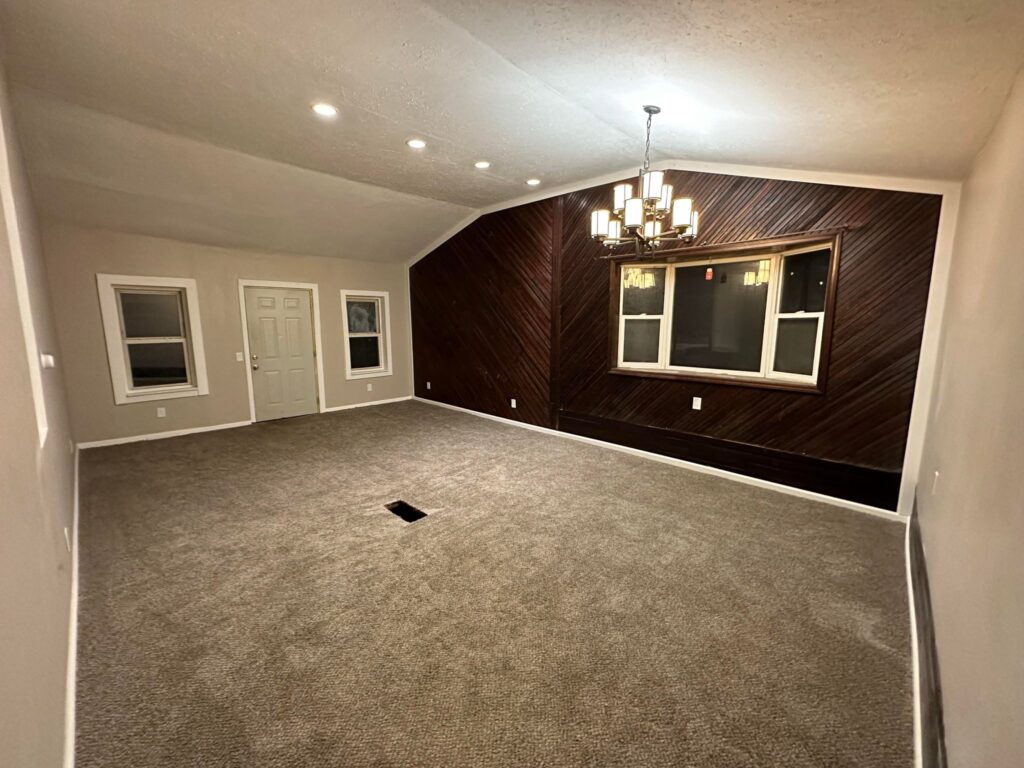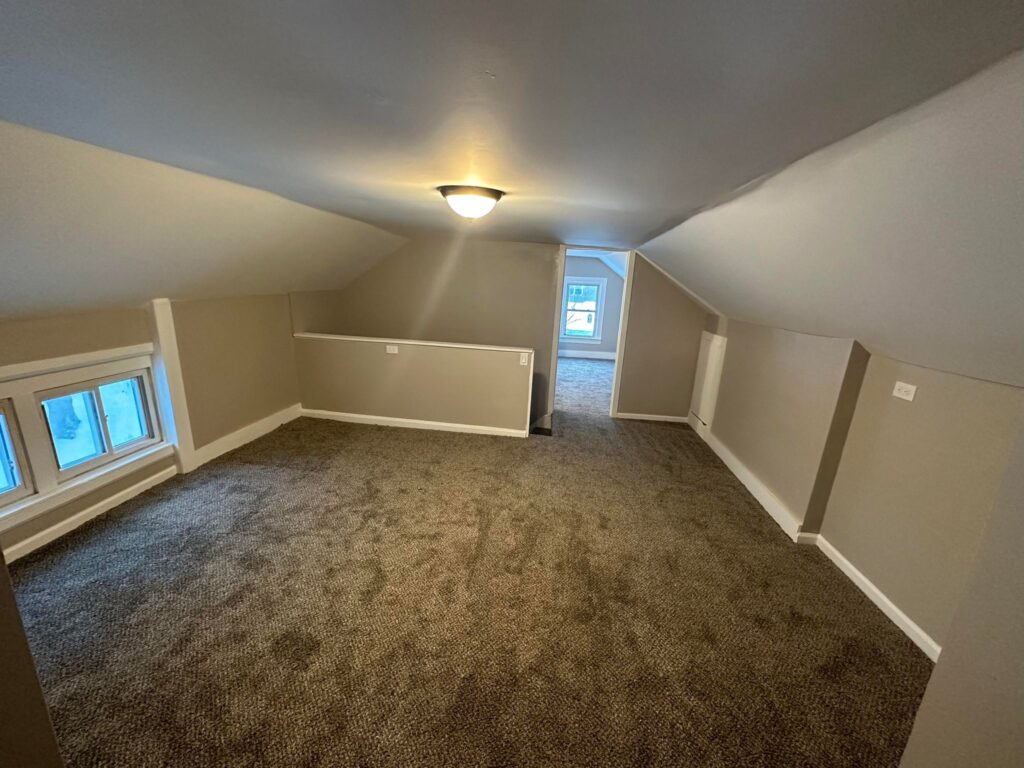
Interior painting is one of the most popular DIY projects for homeowners looking to refresh their living spaces. However, many people make common painting mistakes that can lead to disappointing results.
This comprehensive guide will help you avoid these pitfalls and achieve a professional finish in your next paint project.
1. Skipping Surface Preparation
One of the most common mistakes in interior painting is failing to properly prepare surfaces before applying paint. Proper prep work is crucial for a smooth, long-lasting paint job.
How to avoid:
- Clean walls thoroughly with a mild detergent solution to remove dirt, dust, and grease.
- Fill holes and cracks with a spackling compound and sand them smooth once dry.
- Sand rough spots and glossy surfaces to improve paint adhesion.
- Use a quality primer, especially on bare drywall, stained surfaces, or when making dramatic color changes.
- Take your time with this step – it’s the foundation for a great paint job and will make a big difference in the final result.
2. Choosing the Wrong Paint
Using the wrong type of paint or sheen can lead to poor coverage, durability issues, and a finish that doesn’t suit the room’s function.
How to avoid:
- Select the right paint for your surface (e.g., latex paint for most interiors, oil-based paint for certain applications).
- Consider the room’s function when choosing paint sheens:
- Flat or matte for low-traffic areas and to hide wall imperfections.
- Eggshell or satin for moderate-traffic areas like living rooms.
- Semi-gloss or glossy paint for high-traffic or moisture-prone spaces like kitchens and bathrooms.
- Don’t be tempted by lower-quality paints – invest in high-quality paint for better coverage and longevity.
3. Neglecting to Prime
Skipping primer can result in uneven color, poor paint adhesion, and the need for more coats of paint.
How to avoid:
- Use a quality primer, especially when painting over dark colors, bare drywall, or stained surfaces.
- Even with paint and primer in one product, priming separately can improve results, particularly on challenging surfaces.
- Allow the primer to dry completely before applying the paint.
4. Improper Paint Application
Applying too much paint or using incorrect techniques can cause drips, uneven coverage, and a poor final result.
How to avoid:
- Use the right amount of paint on your brush or roller – don’t overload them.
- Apply paint in a “W” or “M” pattern for even distribution when using a roller.
- Use long, smooth strokes and avoid going back over partially dried areas.
- Take your time and work in small sections, maintaining a wet edge to prevent lap marks.
- For brushwork, use the appropriate brush size and type for the area you’re painting.
5. Ignoring Drying Times
Not allowing adequate drying time between coats can lead to peeling paint, an uneven finish, and wasted effort.
How to avoid:
- Follow the manufacturer’s recommendations for drying times between coats.
- Be patient – rushing can ruin your hard work and necessitate starting over.
- Factor in environmental conditions like humidity and temperature, which can affect drying times.
6. Using Low-Quality Tools
Cheap brushes and rollers can leave bristles behind, create uneven textures, and make the painting process more difficult.
How to avoid:
- Invest in high-quality paint brushes, rollers, and other tools.
- Choose the right tools for your paint type and surface (e.g., synthetic bristles for latex paint, and natural bristles for oil-based paint).
- Clean brushes and rollers properly after use to extend their life.
7. Forgetting About Ventilation
Poor ventilation can lead to slow drying times, strong paint fumes, and potential health hazards.
How to avoid:
- Open windows and use fans to ensure good air circulation.
- Consider using low-VOC or zero-VOC paints to reduce odors and potential health risks.
- Take regular breaks and step outside for fresh air if you’re sensitive to paint fumes.
8. Taping Incorrectly
Improper use of painting tape can result in paint bleeding under the edges or peeling off fresh paint when removed.
How to avoid:
- Use quality painter’s tape and apply it carefully, pressing down the edges to create a good seal.
- Remove the tape at a 45-degree angle while the paint is still slightly wet for the cleanest lines.
- If the paint has dried, score along the edge of the tape with a utility knife before removing it to prevent peeling.
9. Not Protecting Surrounding Areas
Failing to use drop cloths and protective coverings can lead to messy spills and splatters that are difficult to clean up.
How to avoid:
- Cover floors, furniture, and fixtures with drop cloths or plastic sheeting.
- Use painter’s tape to protect trim, windows, and other areas you don’t want painted.
- Remove or cover hardware, switch plates, and outlet covers.
10. Rushing the Color Selection
Choosing the wrong color is a mistake that’s costly and time-consuming to fix, and can leave you unsatisfied with your paint project.
How to avoid:
- Take your time choosing colors. Don’t rush this important decision.
- Use color chips and paint samples on a small section of the wall.
- Observe how the color looks in different lighting conditions (natural daylight, artificial light, morning, evening) before committing.
- Consider the room’s function, existing décor, and how the color will flow with adjacent spaces.
Conclusion
By avoiding these common interior painting mistakes, you can achieve professional-looking results in your DIY painting project. Remember, the key to a successful paint job is proper preparation, using the right materials and techniques, and taking your time at every stage of the process.
If you’re tackling a large project or aren’t confident in your painting skills, consider hiring professionals to ensure a flawless finish. However, with careful planning and attention to detail, many homeowners can achieve beautiful results on their own.
Whether you’re refreshing a single room or repainting your entire home’s interior, keeping these tips in mind will help you avoid common pitfalls and create a space you’ll love for years to come. Happy painting!
If you want us to help you with your Interior Painting or any other services just contact us.

